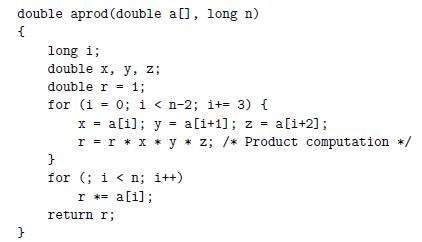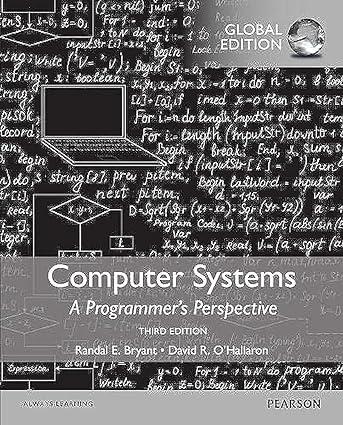Consider the following function for computing the product of an array of n double-precision numbers. We have
Question:
Consider the following function for computing the product of an array of n double-precision numbers. We have unrolled the loop by a factor of 3.

For the line labeled “Product computation,” we can use parentheses to create five different associations of the computation, as follows:

Assume we run these functions on a machine where floating-point multiplication has a latency of 5 clock cycles. Determine the lower bound on the CPE set by the data dependencies of the multiplication.
Fantastic news! We've Found the answer you've been seeking!
Step by Step Answer:
Related Book For 

Computer Systems A Programmers Perspective
ISBN: 9781292101767
3rd Global Edition
Authors: Randal E. Bryant, David R. O'Hallaron
Question Posted:





